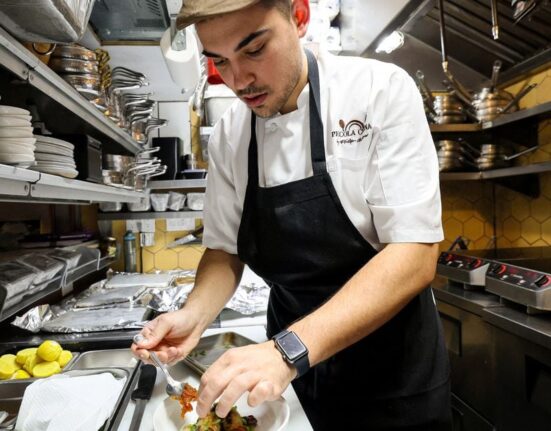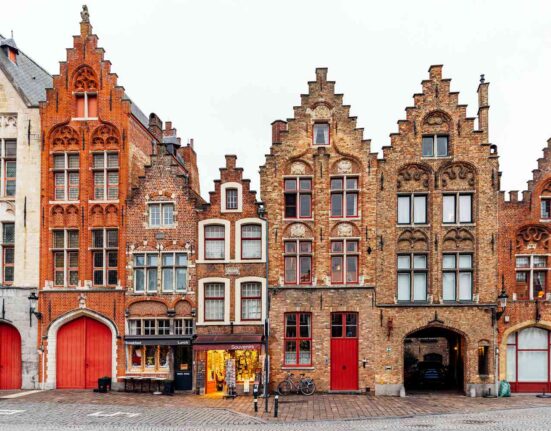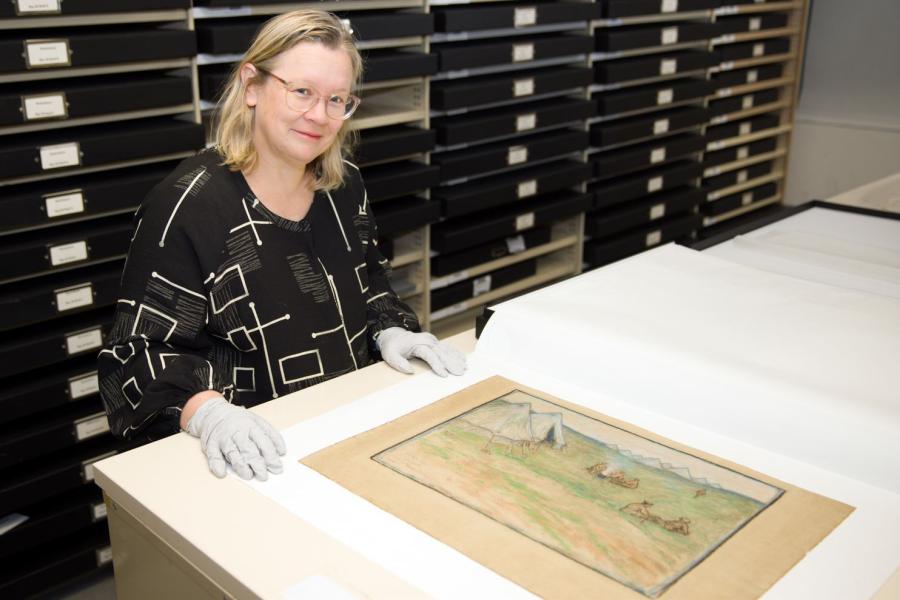
Curator Alex Torrens with Iso Rae’s Boiling the Billy, 1915. Photo: David Whittaker
Alex Torrens couldn’t believe it when she opened her email at the Australian War Memorial.
It was just before Remembrance Day, and there, hidden amongst the messages in her inbox, was a message offering the Memorial a rare pastel drawing from the First World War.
The art curator had missed out on the chance to acquire a drawing by the same artist just months before.
“It was very exciting,” Torrens said. “It was an unsolicited email, completely unexpected, out of the blue, basically offering this wonderful drawing to us. And so it just made my day.”
The drawing was by the Australian-born impressionist painter Iso Rae who was living and working at an artists’ colony at Étaples in northern France when the First World War broke out.
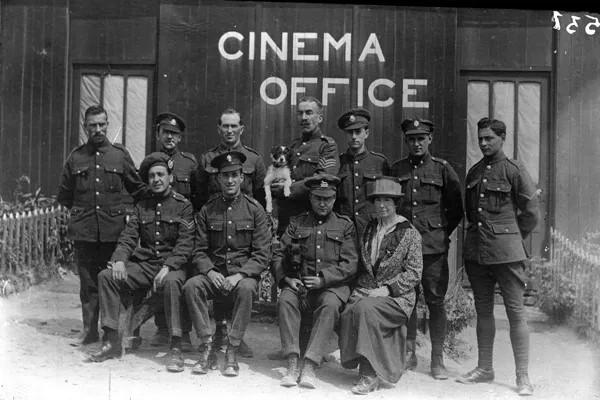
Iso Rae photographed with British soldiers outside the Cinema Office. This is the building depicted by Rae in her work Cinema queue. Photo: ©Quentovic Museum-City of Étaples-sur-Mer. Caron Collection.
Most artists left, but Rae refused to leave. She remained at Étaples for the rest of the war and was one of only two Australian women artists who were able to depict the war at such close quarters.
Although she was not an official war artist, Rae produced some 200 pastel drawings while working for the Voluntary Aid Detachment of the British Red Cross (VAD) in the large army camp at Étaples from 1915 to 1919.
Her 1915 work, Boiling the Billy, depicts a group of soldiers relaxing around a small campfire.
It was donated to the Memorial by the Holy Spirit Missionary Sisters in Brisbane. The Holy Spirit Sisters have their own remarkable war history from the Second World War.
In May 1944, 18 Holy Spirit Sisters, who survived Japanese prison camps and death ships in Papua New Guinea, arrived in Brisbane. They joined five other sisters who had trekked for months across the mountains and valleys of Papua New Guinea. They were sick and weary, but grateful to be alive. Fifty-four of their Sisters had died. The Sisters set up a convent at Raff Farm in the Brisbane suburb of Apsley in March 1945 and were the beneficiaries of several artworks from the estate of the well-known Queensland art collector and patron of the Art Gallery of Queensland, Sir Leon Trout.
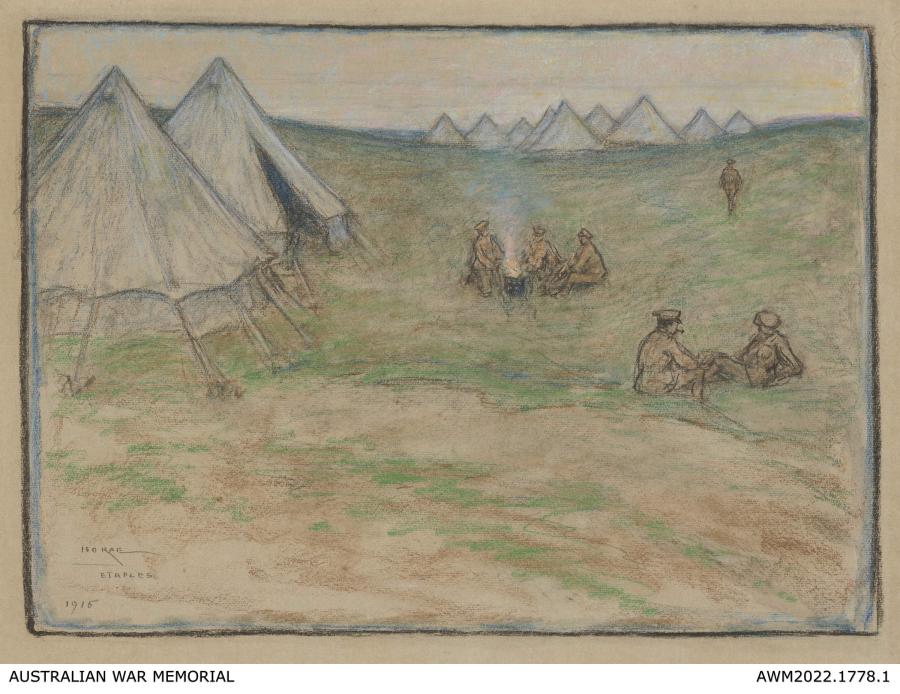
Iso Rae’s Boiling the Billy, pastel, gouache on grey laid paper mounted on buff paper, 1915.
Torrens said the Sisters wanted the Iso Rae drawing to be part of a public collection.
“Her work is incredibly rare,” Torrens said.
“And this particular work is quite significant in that it is an early image from 1915, when the Australians were based out of the large army camp at Étaples.
“The Memorial only has three other of Rae’s drawings from 1915, so it’s added another vignette from that time period, and is a significant addition to the collection.
“The drawing is one of 75 which are known to have been brought out to Australia from Europe in the 1970s. At the time the Memorial was able to purchase a small selection. But until then, Rae’s work was little known, as she never returned to Australia.
“It’s an incredible private record of what life was like … and although she wasn’t an official war artist, it’s just as authentic.
“First World War works, in particular, rarely come up, so donations like these are incredibly important. They enables us to really develop that collection in a way that just wouldn’t be possible without the generosity of these owners and private collectors.
“It’s a really lovely work to have.”
Read more about Iso Rae’s life and work here.





